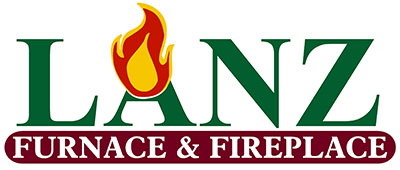
We spend lots of time indoors. In fact, the Environmental Protection Agency (EPA) has determined being indoors accounts for 90% of our days. However, the EPA also says your indoor air can be three to five times dirtier than outside your home.
That’s due to the fact our residences are tightly sealed to increase energy efficiency. While this is great for your energy costs, it’s not so good if you’re amid the 40% of the population with respiratory allergies.
When outdoors ventilation is limited, pollutants including dust and volatile organic compounds (VOCs) might get stuck. As a result, these pollutants might aggravate your allergies.
You can enhance your indoor air quality with clean air and routine dusting and vacuuming. But if you’re still having problems with symptoms during the time you’re at your residence, an air purifier could be able to help.
While it can’t get rid of pollutants that have settled on your furnishings or flooring, it can help freshen the air traveling throughout your residence.
And air purification has also been scientifically proven to help reduce some allergic symptoms, according to the American College of Allergy, Asthma and Immunology. It might also be useful if you or a loved one has a lung condition, such as emphysema or COPD.
There are two options, a portable air purifier or a whole-home air purifier. We’ll go over the distinctions so you can determine what’s right for your house.
Whole-House Air Purifier vs. Portable Air Purifiers
A portable air purifier is for a lone room. A whole-house air purifier accompanies your heating and cooling system to purify your full house. Some models can purify by themselves when your home comfort equipment isn’t running.
What’s the Best Air Purifier for Allergies?
Look for a model with a High Efficiency Particulate Air (HEPA) filter. HEPA filters are placed in hospitals and provide the most comprehensive filtration you can get, as they eliminate 99.97% of particles in the air.
HEPA filters are even more powerful when installed with an ultraviolet (UV) germicidal light. This mighty blend can wipe out dust, dander, pollen and mold, all of which are standard allergens. For the best in air purification, think over a unit that also has a carbon-based filter to decrease household odors.
Avoid buying an air purifier that creates ozone, which is the main element in smog. The EPA cautions ozone may worsen respiratory troubles, even when released at small concentrations.
The Allergy and Asthma Foundation of America has made a checklist of questions to think over when getting an air purifier.
- What can this purifier take out from the air? What doesn’t it remove?
- What’s its clean air delivery rate? (A bigger amount means air will be purified faster.)
- How often does the filter or UV bulb need to be changed]? Can I complete that without help?
- How much do replacement filters or bulbs cost?
How to Reduce Seasonal Allergy Symptoms
Want to have the {top|most excellent|best] performance from your new air purification unit? The Mayo Clinic suggests taking other procedures to reduce your exposure to seasonal allergy triggers.
- Stay indoors and keep windows and doors closed when pollen counts are high.
- Have other household members cut the lawn or pull weeds, since this work can trigger symptoms. If you must do this work yourself, consider using a pollen mask. You should also shower right away and put on clean clothes once you’re completed.
- Avoid stringing up laundry outdoors.
- Run your air conditioner while indoors or while driving. Consider installing a high efficiency air filter in your house’s home comfort unit.
- Balance your house’s humidity saturation with a whole-house dehumidifier.
- Hardwood, tile or linoleum are the ideal flooring kinds for reducing indoor allergens. If your house has carpet, use a HEPA filter on your vacuum cleaner.
Let Our Specialists Manage Your Indoor Air Quality Needs
Ready to move forward with getting a whole-house air purifier? Give our experts a call at 608-291-3606 or contact us online to schedule an appointment. We’ll help you locate the ideal unit for your residence and budget.


